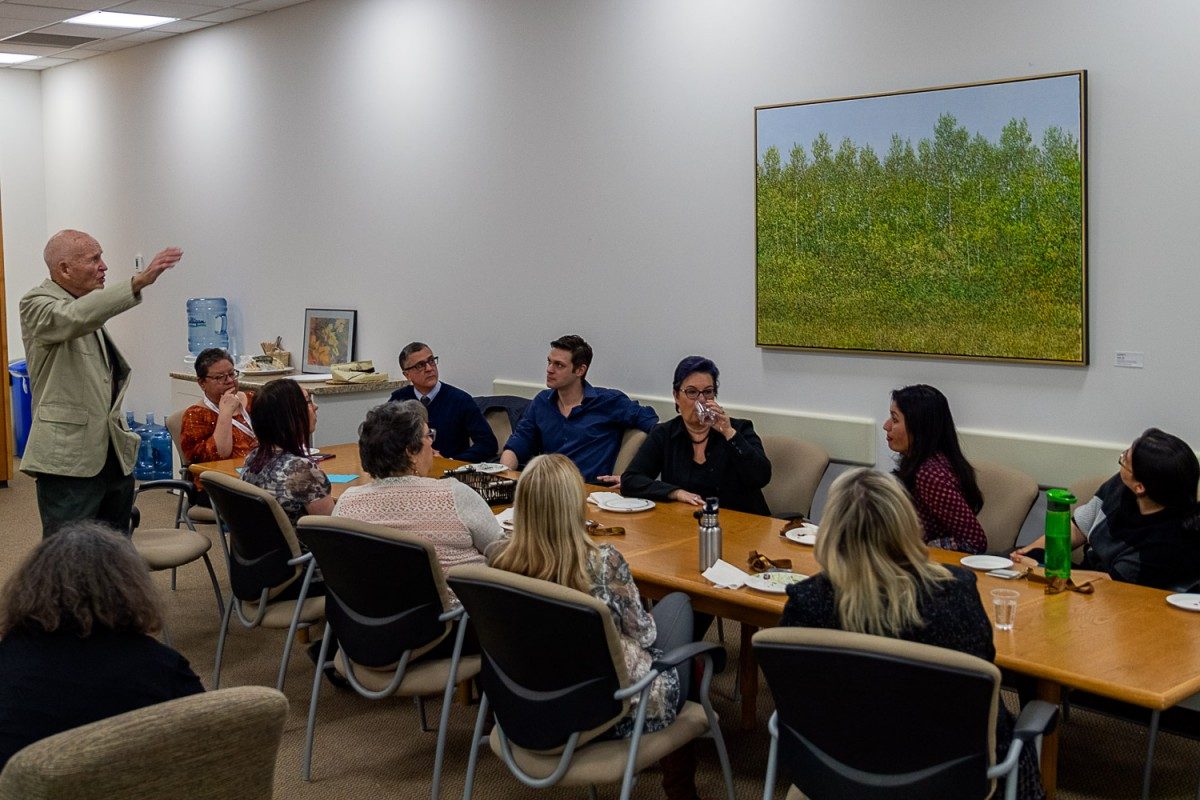
McMaster says imitation is one of the best ways to learn how to paint.
Portrait of an artist as a retired teacher
To the casual visitor to the faculty lounge, it’s a pastoral setting called Poplars, 2017, an impressionistic landscape of dappled light and colour, a hopeful reminder of coming warmer months while gripped in the icy clutches of a Prairie winter.
To the painter’s creator, Don McMaster [BEd/58], it’s home.
“This is what I look at all day, every day. I see how the sunlight hits the leaves and casts the shadows,” McMaster told a packed crowd, assembled over lunch in the lounge, where the painting now hangs, a donation from the retired-teacher-turned-painter.
McMaster said the mural was inspired by the works of French painter Benoit Trimborn, depictions he described as “almost photographic.”
For his painting, McMaster achieved his life-like rendering, painting as much as he could with one old, ragged brush—applying dots and dashes of colour to impressionistic effect.
“I challenge you to find me a leaf. I never did paint one. …There are lots of dots and splotches, and groupings of colour,” he said.
Imitation may be the best form of flattery, and it’s also the best way to learn, says McMaster, who cites as inspiration to paint professionally, Andrew Wyeth, one of the best-known American artists of the 20th century.
“The number-1 thing is to find an artist that you love and copy,” McMaster said, advising how aspiring artists can start to pursue their passion.
McMaster was inspired to become an artist when visiting the Chicago Art Institute, he encountered Wyeth’s tempera painting called Adam.
“I almost wept, I was so overcome: the light, the look … I thought: Who is this guy?” he said, his voice still ringing with astonishment.
Returning home, McMaster collected books about the luminary of the regionalist style, before first attempting a reproduction of Adam later gifted to his brother-in-law.
Encouraged to pursue teaching by his father, Thomas, a former Manitoba Teachers’ Society general secretary, McMaster painted professionally only in retirement. Whereas, he once painted eight to 10 hours a day, he spends up to four hours daily in front of an easel and canvas.
“It’s a wonderful hobby. I paint every day and I never tire of it,” he said.
Reflecting on Poplars, 2017, he estimated it took about two weeks to complete.
And although the style of painting has never appealed to him, he considers the work a piece of abstract art.
“Those dabs of paint were made to look like trees. I could paint them so that they didn’t look like trees, but then, what would be the point?” he said, laughing.






